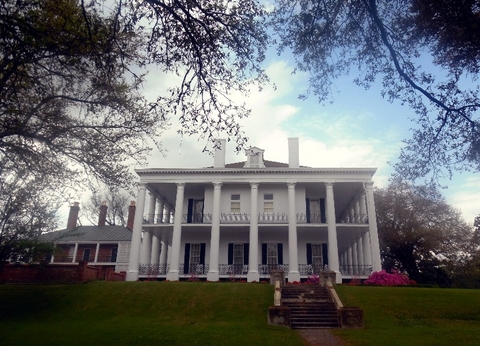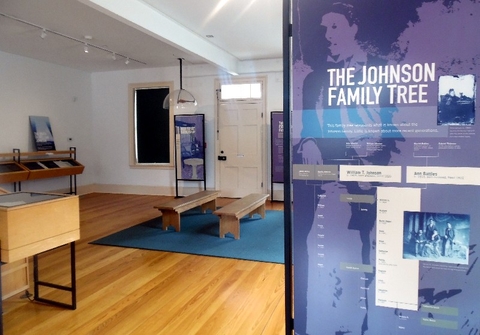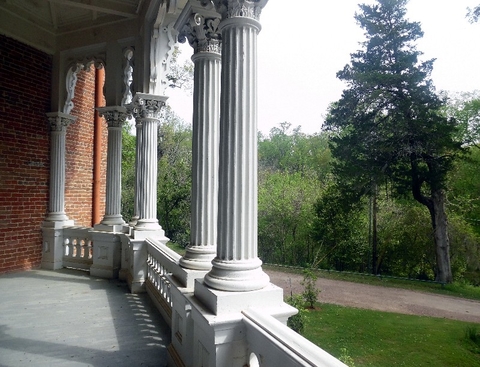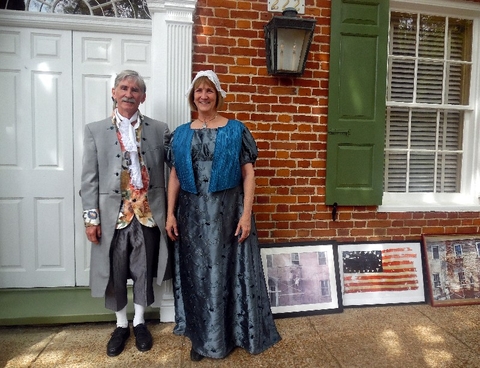Occupied by the Natchez Indians for centuries before French explorers established a settlement in 1716, Natchez, MS is the oldest continuous settlement on the Mississippi River.
With lavish antebellum mansions, a downtown antique district, museums, rich ethnic heritage and culture, savory eateries and plenty of fun activities, it’s a rewarding port of call for cruise visitors.
That’s Travel Agent’s overall assessment after a three-day visit and stay at Dunleith Historic Inn (shown in the photo below) this past spring, prior to a four-night cruise on American Queen Steamboat Company’s American Duchess.

Best of all, Natchez – despite its tourism draw – still retains that welcoming small-town feel. People wave at each other on the street, gladly stop to help visitors with directions and go out of their way to make tourists feel at home.
As a result, travelers taking a lower Mississippi River cruise go ashore for a day at Natchez – arriving as strangers but often leaving as friends. Along the way, here’s what we’d suggest cruisers see, do and taste ashore in Natchez.
Start the Day Right
Overlooking the Mississippi River Bridge, the Natchez Visitor’s Center is a one-stop shop for visitors to ask questions, peruse brochures, watch a 20-minute “Natchez Story” video and stroll through exhibits. It’s also an official Mississippi Welcome Center.
Cruisers can also arrange touring and buy tickets for home tours and events. For example, Natchez Pilgrimage Tours has a counter at the center. Among its choices are tickets for the city's popular spring and fall Pilgrimages. Natchez’s 2018 Fall Pilgrimage is set for September 21 through October 8.
It's a time when specific historic homes and venues (some not always open to visitors) open their doors and welcome visitors for tours, activities and special events. Travelers are often greeted by volunteers or historic home owners/workers dressed in period clothing, adding an element of authenticity to the historic touring.
Year-round, though, there are plenty of other touring options to discuss with the folks at the visitor’s center. How about a fun, 45-to-60-minute golf-cart tour? Local resident Sally Durkin operates Open Air Tours, which tours visitors around the historic downtown area in a golf cart.
If you’re lucky, you might get Durkin herself as your guide. What’s fun is that you feel a part of the community as, along the route, she calls out to this and that shopkeeper or person she knows. Mostly, though, she imparts a cornucopia of historic and cultural knowledge as visitors view more than two dozen historic sites along the route.

We liked that this golf cart tour was short enough so that visitors on a one-day port call could also opt for other activities and touring too – for greater destination immersion, based on their personal interests.
Open Air Tours’ departures vary by day and season. Tickets can be purchased at the visitor’s center, but daily space is limited, so to assure you have a slot, email [email protected] for an advance reservation.
Enter a Time Warp
Our favorite local attraction, hands-down, is Natchez in Historical Photographs, an amazing collection of 500 or more professional, historic photos from 1845 to 1910. Strolling through this exhibition within Stratton Chapel, behind the Natchez Presbyterian Church, on Pearl Street, is akin to entering a time machine.
First-hand touring tip? We’d start here early during any port day visit to Natchez. This collection of past-era images truly adds perspective on what you’ll see throughout the city. Plus, it takes just an hour or less to peruse all the large wall photos.
Photographs were taken by local professional photographers back in the day. Through their lens, the photographers captured the personalities and lifestyle of Natchez's citizens of diverse races, young and old, rich and poor.
We loved the shots of young children in their finest attire, society belles, farmers in the fields, shopkeepers, the historic district, husbands/wives, famous homes and, in particular, Mississippi River steamboats packed with cotton bales.
Admission is free, donations appreciated. The gallery of photos is on the second floor; an elevator is available.
Celebrate Diversity
African-American and Creole heritage is strong in Natchez. A good place to start exploring it? Operated by the U.S. National Park Service, the William Johnson House on State Street serves up an amazing story for anyone interested in antebellum or African-American history.
A free man of color in Natchez during the mid-1800s, Johnson owned his own barber shop. He gained respect from leading citizens, loaned money to some of them, and purchased this residence, several other buildings and 2,000 acres of land outside town. Interestingly, this free man of color also owned several slaves.
Most notably, though, Johnson kept a personal diary from 1835 until his death in 1851. It detailed everything from his search for a lost cow to the visit of former President Andrew Jackson to Natchez.
Today, Johnson's house is open free to the public. Downstairs, travelers will find a bookstore and exhibit room (as shown in the photo below).

Upstairs, visitors can gaze at the fully furnished, re-created living quarters. Park service rangers will provide insight into Johnson’s life and the house’s history.
Natchez’s African American and Creole history is far older than Johnson’s era, though. Free blacks worked as skilled tradesmen during the French period and later during the Spanish era in Natchez, long before the English arrived.
We learned about a bit of that rich history from Darrell White, director of heritage, the Natchez Association for the Preservation of Afro-American Culture; that group operates the Natchez Museum of African-American History and Culture within the 1905-era old U.S. Post Office building on Main Street.
The museum’s exhibit hall is a National Literary Landmark and dedicated to Richard Wright, a Natchez native and author. Visitors will see an array of one-of-a-kind African-American memorabilia, photographs, books and historic artifacts, many related to Wright’s travels in Africa or local Natchez history.
At the museum, cruisers also can learn about Forks of the Road just outside the city; while no building remains today, this site was once the spot of the antebellum South’s second largest slave market.
Today, the U.S. National Park Service owns the Forks of the Road site, essentially marked by signage, and community leaders are hoping for some type of more robust exhibit there in the future.
Separately, Melrose, a Natchez antebellum mansion open for tours, has something many historic mansions don’t -- intact slave cabins that visitors can view; they feature exhibits related to slavery.
Diversity in the region is also reflected in what was once a flourishing Jewish community over the centuries. Temple B'nai Israel, located at South Commerce and Washington Streets, is a 1905-era Jewish house of worship that replaced a former 1872 structure on the same site.
Today, the temple’s congregation has shrunk to only a few remaining Jewish families, but they reflect a rich heritage of what was once a thriving Jewish community prior to the Civil War. Today, Temple B’nai Israel is open for tours by appointment, so contact the temple prior to your visit.
This region is also strong in Native American heritage. Just outside Natchez is the Natchez Trace Federal Parkway, a scenic highway operated under the auspices of the U.S. National Park Service. It follows a route that was once a trail used by trappers and traders to bring goods to/from the Mississippi River.
This trace (or trail) was also used by the Natchez Indians and other native American tribes. Today, it’s a pretty drive with historic markers along the way. Plus, visitors will discover hiking trails and a designated biking trail.
Also, not far from downtown Natchez, the Grand Village of the Natchez Indians is a 128-acre site with three prehistoric native American mounds, a reconstructed Natchez Indian house and museum.
Southern Style & Architecture
Certainly, Natchez “oozes” with a flavor and style of the Old South. So not surprisingly, cruisers have a large choice of antebellum-era homes, mansions and grand estates to explore. Many are on the National Register of Historic Sites. Some older structures also date from the Colonial period (French, Spanish and English eras).
One “must do” for many Natchez visitors is a tour of unfinished Longwood, designed in the antebellum era by a Philadelphia architect for Haller and Julia Nutt, Mississippi natives and members of Natchez's planter elite. It’s located just outside the city limits.
Construction of the grand, octagonal edifice, planned as a 30,000-square-foot Oriental villa, began in 1860 but was halted in 1861 by rising political tensions over the Civil War.
While the exterior was essentially completed, the interior wasn’t; the unfinished building was known as “Nutt’s Folly.” Only the lowest level was finished and the Nutt family lived there until the 20th century.
Today, the large structure, as well as outbuildings, are cared for by the Pilgrimage Garden Club of Natchez.

Visitors will tour the lower level, but when the guide shows the way upstairs, many people take a deep breath in seeing the bare walls, exposed beams and wooden structural features, exactly as it was "left" when the construction halted in the 1860s.
Yet, the exterior of Longwood, including the magnificent porches (one is shown in the photo above) are essentially completed and accessible from that unfinished interior space.
Another unusual historic home to tour is The Towers, which has had multiple building phases over several centuries. Its first phase was during the Colonial western expansion in 1798. For cruisers, it’s fun to know that many components of the structure show signs of peg construction and barge-board elements from river boats arriving at Natchez for the fur trade.
In 1826, a second Neo-Classical construction phase added a colonnade of square columns, some still visible on the porches, while a third 1858-era phase created the Italian villa-like, Renaissance Revival façade with a pair of third-story tower rooms.
But a 1920's storm sizably damaged those upper tower rooms, and they were removed. In the latest phase, owners Ginger and James Hyland are restoring and rebuilding those two towers; completion is slated for this coming winter.
But the best reason to visit The Towers for a tour is, in our view, a chance to meet Ginger herself, an enthusiastic Natchez resident (who relocated from California) and an avid collector of everything from ink wells to beaded purses and other eclectic groups of rare objects.
She joyously shows her “loves” to visitors, but photos are not permitted inside. One easy way to visit? American Queen Steamboat Company includes a two-hour premium tour and lunch on The Towers’ back porch, hosted by the Hylands; cost is $79 per person.
From the Beginning
In the heart of downtown Natchez, Texada – named for a Spanish-era nobleman and community leader who lived at this mansion -- is considered the first brick building constructed in Natchez.
In fact, this lovely home served as Mississippi's first state capitol from 1817-1820.

Shown above outside Texada are Helen Smith, the historic home's owner, and Floyd Gardner, a Texada tour guide.
It’s open for tours and, as with many historic home/mansion tours in Natchez, visitors may encounter the locals in period clothing.
Across town, situated on the site where General Andrew Ellicott first raised the American flag over Natchez in 1797 – under the direction of President George Washington and in defiance of Spanish city authorities, is the House on Ellicott Hill.
Today, this well-preserved, late 1790s historic home is lovingly maintained by the Natchez Garden Club. What’s unusual? We liked that its design isn’t akin to Tara, as many antebellum mansions are, but instead something a bit different.
Built at a time, when Natchez was actively trading with the Spanish and French in the Caribbean, it reflects West Indies-style architecture.
Original or comparable period furnishings inside – with some choices by Ellicott himself in the hope that Washington would visit (he didn’t) -- make for an interesting house tour.
Stay tuned for Part 2 of this story (slated for publication here on Wednesday, August 22) with more historic homes, antique shopping, dining, Natchez on the Bluffs and Natchez Under the Hill coverage, plus touring a bit farther out.
For more information on Natchez tourism, contact Visit Natchez at www.visitnatchez.org
Related Stories
Princess Names Fifth Royal-class Ship Enchanted Princess
Virtuoso Completes Travel Week With Advisor, Partner Awards
Want a More Adventurous Danube Cruise? Head East From Budapest